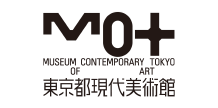History of TOKAS
- TOP >
- About TOKAS >
- History of TOKAS
History of TOKAS
| 2001 | |
|---|---|
| August 1st | Tokyo Wonder Site Committee was established |
| December 25th | TWS (Hongo) opened |
| 2005 | |
| April 1st | Transitioned to joint management by Tokyo Metropolitan Government and Tokyo Metropolitan Foundation for History and Culture |
| May 29th | TWS Shibuya Art Cafe opened |
| July 22nd | TWS Shibuya opened |
| 2006 | |
| April 1st | Change of the business operation system (started operating as an independent project by Tokyo Metropolitan Foundation for History and Culture) |
| June 3rd | Short-term residence (a pilot program) started |
| November 7th | TWS Aoyama opened |
| 2014 | |
| April 1st | With the organizational restructuring, TWS became part of MOT
The residence projects were suspended temporarily to prepare for the relocation of the office |
| May 19th | The TWS office in Aoyama was moved in MOT The Residence was moved to Sumida-ku, and renamed TWS Residence |
| September 28th | TWS Residence opened after a trial period |
| 2017 |
|
| April 1st | With the organizational restructuring, TWS became the Arts Program and Residency Division of MOT, eliminated the positions of director and deputy director, and its management department was absorbed into MOT |
| September 17th | TWS Shibuya was closed and renovations begun for it to re-open as an inclusion in the new facility to be run by MOT |
| October 1st | TWS was renamed Tokyo Arts and Space |
Facility overview
Tokyo Arts and Space Hongo
| Location | 2-4-16 Hongo, Bunkyo-ku |
|---|---|
| Total floor area | 484.72㎡ |
| Construction | An office building, reinforced concrete structure, three-story with a flat roof |
| Establishment | December 25th, 2001 |
| Facility details | Three exhibition rooms, a lounge and other rooms |
Tokyo Arts and Space Residency
| Location | 2-14-7 Tatekawa, Sumida-ku (1st and 4th to 6th floors, Arts Kikukawa) |
|---|---|
| Total floor area | 758.56㎡ (the part of the building leased by Tokyo Arts and Space) |
| Construction | Reinforced concrete structure, seven stories above ground |
| Establishment | September 28th, 2014 |
| Facility details | 12 guest rooms, two studios, a library, a lounge and other rooms |
Tokyo Arts and Space Office
| Location | 4-1-1 Miyoshi, Koto-ku Located in MOT |
|---|
Programs in the past

Tokyo Wonder Wall
Open call group exhibitions for artists under the age of 35, which were held from 2000 to 2016. It consisted of two divisions: one was for two dimensional artworks and another was for three-dimensional artworks, video art and installations. The winning works were exhibited at MOT (exhibited at TWS Shibuya in 2016).

WONDER SEEDS
A program conducted under the concept of BUY=SUPPORT, where works by young artists were selected on an open call basis and displayed in exhibits that offered art lovers a chance to see the works and support the artists by purchasing them. The works were sold at the exhibitions and online.

TEAM (Tokyo Wonder Site: Emerging Artist on Mezzanine)
A program for talented young artists and artists who have participated in the TWS programs and gained experience in their fields. The program was named with the expectation that artists would expand their opportunities internationally.

On Site Lab Workshop
A workshop with emphasis on the process of creation, where a creator active on the front line tutored young creators and designed a project together. They organized symposiums, showed the results of their work and gave presentations.

Agenda of the Arts
This program offered opportunities through exhibitions and symposiums for the participants to have dialogues about the roles of art, cultural organizations and art centers in addressing problems that society was facing. It aimed to identify the potentials and challenges of contemporary art from a global perspective.

On Site Lab
An experimental program conducted under the theme of learning and interaction, which took place at the actual sites. The participants were involved in various activities such as attending learning courses, working on creational projects, participating in Artists-in-Residence programs and workshops, and listening to talks by artists.

Emerging Artist Support Program
An open call program for exhibition projects. We implemented the projects selected from the “Curation Division” that aimed to offer support and training to young planners, and the “Self-Produce Division” with an aim to support artists and design projects where their own works were included in the exhibitions.

Tokyo Experimental Festival
As a platform for cross-genre, crossover and experimental initiatives, a number of projects for performances and exhibitions from Japan and abroad were introduced in two categories devoted to music and sound: the "Performance Division" and the "Sound Installation Division".

Emerging Artist Support Program MUSIC
With an aim to find and train talented young musicians, we implemented support programs such as the “Master Class” program where the participants received guidance directly from accomplished musicians active on the front line, the “Academy” program for them to learn contemporary music comprehensively, and “On Site Lab Emerging Artist Support Program Music” that were open to young musicians in a variety of fields.







